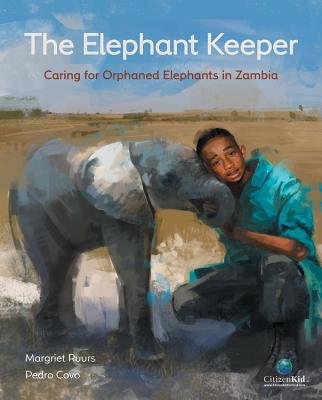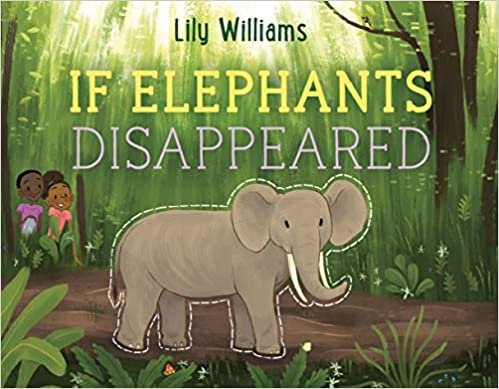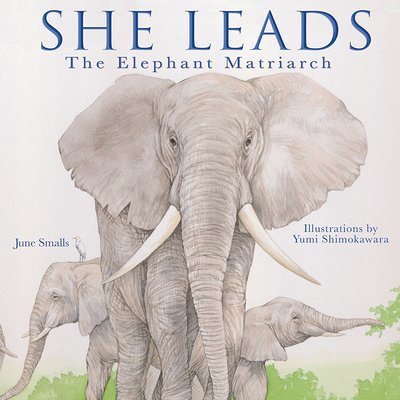An-Animal-a-Month: Elephants
From enemies to friends! Though Aaron grew up thinking elephants were his enemies and felt afraid of them, he became a vital team member of the Lilayi Elephant Nursery in Zambia. The Elephant Keeper: Caring For Orphaned Elephants in Zambia is both the story of his transformation and the rescue and rehabilitation of a baby elephant. Children will see how Aaron set aside his fears and grew to understand and value these intelligent and highly social animals. Expository sidebars add more information about elephants, the dangers they face, and what it’s like to be an elephant keeper. Back matter gives information on how children can help save elephants from extinction and also has a glossary including phrases in the Goba language. I think younger children, ages 8-9, would relish this book at storytime and older children would love reading it on their own. Ages 8-12.
Kind of nonfiction: Narrative – sharing the experience of rescuing an elephant and becoming an elephant keeper. Though the local library shelved this as nonfiction, the back matter explains that the story is inspired by the life of Aaron, a real elephant keeper. That the story was embellished moves it into the realm of informational fiction. Students might discuss the merits and detractions of altering the real story for the purpose of the book. (My categorization using Melissa Stewart’s 5 Kinds of Nonfiction.)
Ties to Next Generation Science Standards:
K-LS1-1 (Use observations to describe patterns of what plants and animals need to survive.) On the first sidebar page, you’ll learn that grown elephants need 200-300 kg of food per day and 160 L of water. Calves under the age of 3 need their mother’s rich milk or must be bottle-fed every three hours. Calves also need the social bonds and protection of the herd in order to survive and develop normally. The need for food, water, milk for the young, social bonds, and protection are common needs of mammals.
K-ESS-3-3 (Communicate solutions that will reduce the impact of humans on the land, water, air, and/or other living things in the local environment.) When humans kill mother elephants for their ivory, humans create the problem of elephant orphans and increase the risk of elephant extinction. This book shows students one solution – elephant orphanages that raise the calves and prepare them to eventually return to the wild, thus helping stabilize elephant populations. What other solutions can your students think of?
1-LS1-2 (Read texts and use media to determine patterns of behavior of parents and offspring that help offspring survive.) The first two sidebars show how elephant moms nurse their young, providing the nutrition for their survival. They also show how the female relatives work together to protect the calves and teach them to find food and water. It’s not in this book, but the females form a circle around calves when predators are threatening them.
3-LS2-1 (Construct an argument that some animals form groups that help members survive.) The second sidebar shows how living in a herd helps elephants survive – through protection, social interactions, and passing down knowledge about water and food resources.
4-LS1-1 (Construct an argument that plants and animals have internal and external structures that function to support survival, growth, behavior, and reproduction.) The first sidebar discusses how elephants use their tusks to root for food and water, strip the bark off trees for food, and defend themselves.
African forest elephants disperse seeds! In If Elephants Disappeared, author and illustrator Lily Willimas leads the reader through a thought experiment. What would happen if the keystone species African forest elephants went extinct? The effects would ripple through the Congo forests. Children will learn that these giants, who eat hundreds of pounds of plant material daily, help germinate and spread seeds throughout the forest. Without them, plant biodiversity would decrease and affect other animals, the soil, and even the weather. Readers will come away with an appreciation for the interconnectivity of all life, plus ideas on how to help protect these elephants. Ages 4-8.
*Note the connection to NGSS standard 2-LS2-2 (Develop a simple model that mimics the function of an animal in dispersing seeds or pollinating plants.)
Kind of nonfiction: Expository literature with a narrow focus on a forest trophic cascade. (My categorization using Melissa Stewart’s 5 Kinds of Nonfiction.)
Two more outstanding elephant books:
She Leads: The Elephant Matriarch details the vital leadership provided by senior female elephants, from finding food and water, especially in times of scarcity, to teaching the next generation how to raise their calves. You could share the larger, simpler text level with the youngest listeners, and add the more detailed second layer of text for older listeners. Expository literature (My categorization using Melissa Stewart’s 5 Kinds of Nonfiction.) Ages 3-8.
The Elephants Come Home: A True Story of Seven Elephants, Two People, and One Extraordinary Friendship tells of the strong bond that developed between a conservationist and the elephants he rescued. It beautifully illustrates the shared emotions of beings as diverse as elephants and humans, including grief. The ending is both sad and comforting. Narrative nonfiction (My categorization using Melissa Stewart’s 5 Kinds of Nonfiction.) Ages 3-5.




